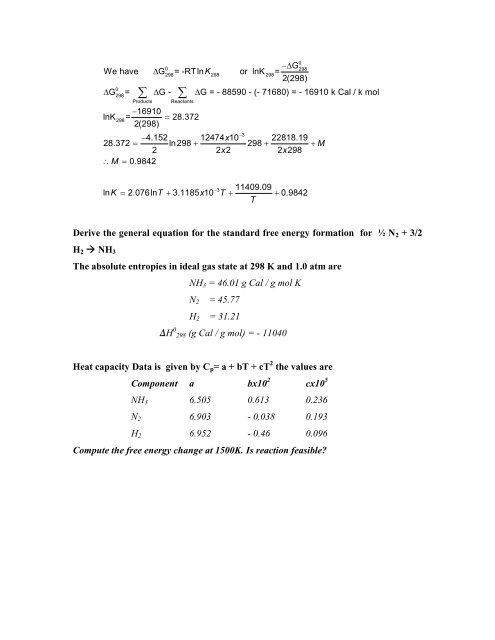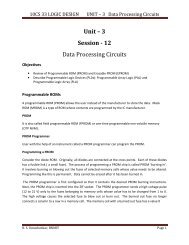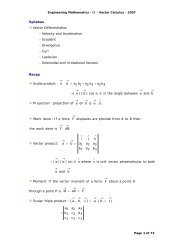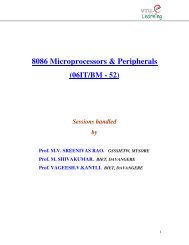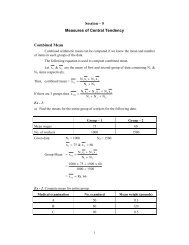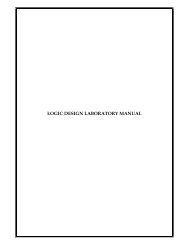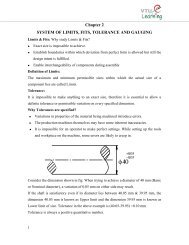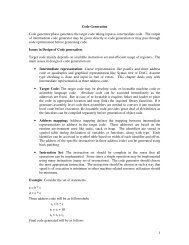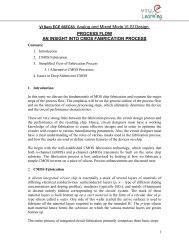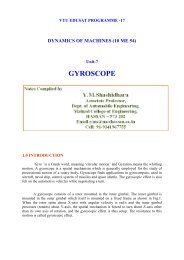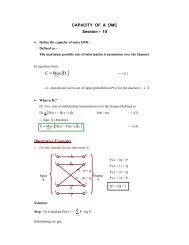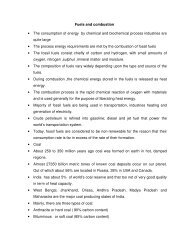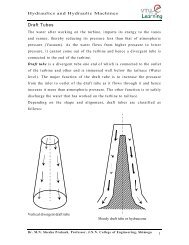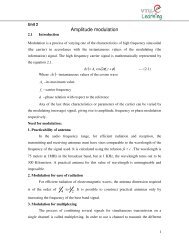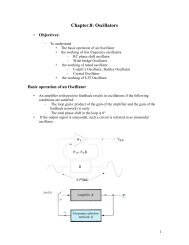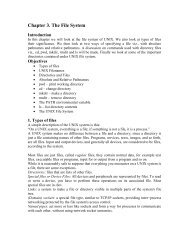Fugacity: It is derived from Latin, expressed as fleetness or escaping ...
Fugacity: It is derived from Latin, expressed as fleetness or escaping ...
Fugacity: It is derived from Latin, expressed as fleetness or escaping ...
Create successful ePaper yourself
Turn your PDF publications into a flip-book with our unique Google optimized e-Paper software.
0<br />
0 G298<br />
We have G<br />
298= -RTln K298<br />
<strong>or</strong> lnK 298=<br />
2(298)<br />
G = G - G<br />
= - 88590 - (- 71680) = - 16910 k Cal / k mol<br />
0<br />
298<br />
<br />
Products Reactants<br />
16910<br />
lnK 298=<br />
28.372<br />
2(298)<br />
3<br />
4.152<br />
12474x10 22818.19<br />
28.372 ln298 <br />
298 M<br />
2 2x2<br />
2x298 M 0.9842<br />
11409.09<br />
3<br />
lnK 2.076lnT 3.1185x10 T 0.9842<br />
Derive the general equation f<strong>or</strong> the standard free energy f<strong>or</strong>mation f<strong>or</strong> ½ N2 + 3/2<br />
H2 NH3<br />
The absolute entropies in ideal g<strong>as</strong> state at 298 K and 1.0 atm are<br />
NH3 = 46.01 g Cal / g mol K<br />
N2 = 45.77<br />
H2 = 31.21<br />
ΔH 0 298 (g Cal / g mol) = - 11040<br />
Heat capacity Data <strong>is</strong> given by Cp= a + bT + cT 2 the values are<br />
Component a bx10 2<br />
T<br />
cx10 5<br />
NH3 6.505 0.613 0.236<br />
N2 6.903 - 0.038 0.193<br />
H2 6.952 - 0.46 0.096<br />
Compute the free energy change at 1500K. Is reaction fe<strong>as</strong>ible?


